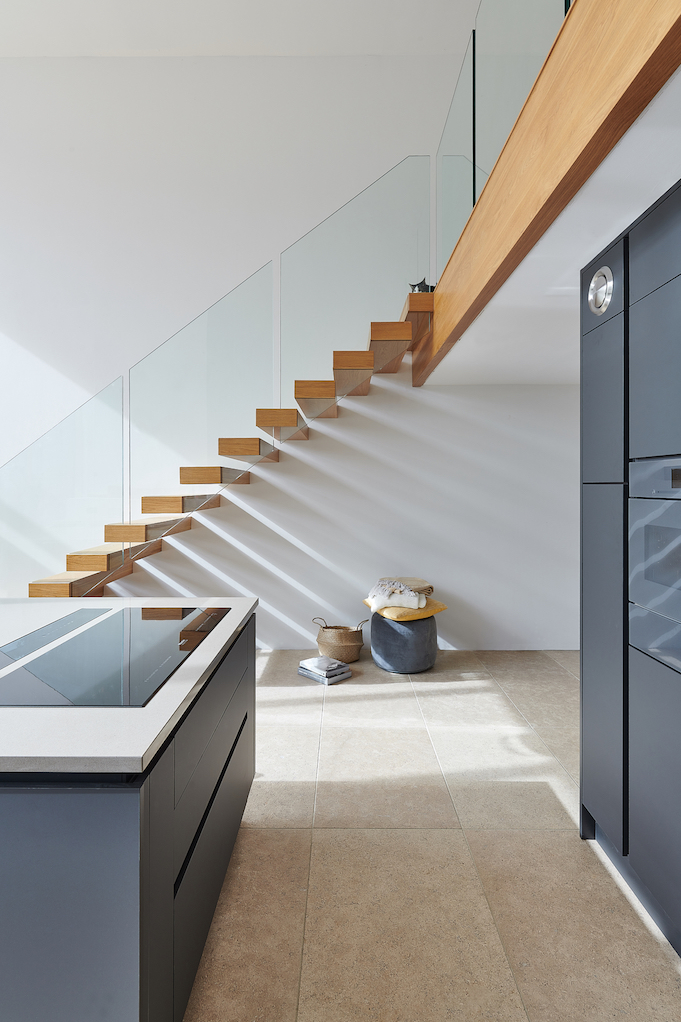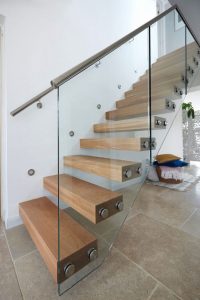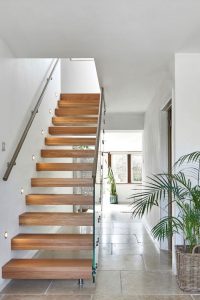What Are the Main Components of a Floating Staircase?

Floating staircases also go by the name cantilever stairs and stand out in any home due to their impeccable designs. The stairs have no supports in between treads, hence the floating illusion. The floating stairs are usually fixed on the wall, glass balustrading, or handrails to guarantee their stability. Due to the complex nature of these stairs, it is advised to enlist the services of an experienced and reputable business to handle and oversee the installation. Cardiff-based Jarrods Staircases are regarded as one of the top suppliers and installers of cantilevered staircases due to their decades of industry experience and product expertise.
Floating stairs should be three and a half inches thick, and it is recommended to structure the floating stairs in a new building. It is also possible to renovate your house with floating stairs if it does not go against your building codes.
Floating staircases are a bit pricey due to the materials used to build them. There are also cheaper alternatives to floating stairs, but they are confined to one standard and a lot riskier. There are different types of stair treads that you can use when structuring your floating stairs.
Floating Stairs: Are They Safe?
The answer is yes; they are safe. All this depends on if;
1. Are accurately engineered
2. If they are made of a suitable railing system
3. Have suitable space under each tread
4. Following applicable building codes on floating stairs
Components of floating staircases include;
Timber/Wood
- You have to determine if the staircases you intend to build are inside or outside your home because most woods tend to crumble under outdoor weather. If you are building your floating stairs outside, pick suitable wood to endure the harsh weather.

- The best wood for the inside of the house is; Hard maple, distressed woods, walnut, red oak, and white oak.
- As for the outdoor floating stairs, it is good to choose Cumaru or Ipe. You may also decide to side with cedar or red oak as they are softer and appealing to the eye; if you choose to use red oak or cedar, be sure to oil them and care for them more regularly or risk them developing a greyish appearance
Glass Treads
- Glass staircases pair well with a steel floating stair stringer, and they come in diverse varieties of patterns, colours, and finishes. The glass tread you choose to use should have a non-slippery surface. Some people also opt for LED lights for their glass treads as they add aesthetic value.
Tile Treads
- Tile treads are more long-lasting and appealing, with the added advantage of not requiring oiling from time to time.
Composite treads
- Composite treads are scratch-free, fade-resistant, they do not crack, splinter or rot hence durable and less maintenance.
Stone Treads
There are different types of stone treads;
Limestone treads
- Limestone treads can be used both outside and inside the house and are very durable. But be sure to seal the limestone to forestall staining.
Bluestone treads
- Bluestone treads are widely used for outside staircases. They add aesthetic value to your outdoor floating stairs and require minimal maintenance.
Steel Treads
- Steel treads are much more robust and are better used on spiral floating staircases. It is good to polish the steel treads to avoid slipping.
How to Differentiate Different Types of Floating Stairs
We now know what floating stairs are, but how do you differentiate one from another?
Floating stairs all come in different sizes and shapes, and the best two factors to differentiate them through their styles;
1. The direction ran by the stairs
2. The number and position of the stair stringers
Different types of floating stairs stringers;
- Zig-zag
- Round rube
- Mono stringer
- Double stringer
- Square
- Tubular
- Sawtooth
- Rectangular
When settling on which type of floating stairs stringer to use, keep in mind;
1. The best floating staircase stringer type to create a practical staircase
2. The best floating stair stringer to bring aesthetic value to your house
Different Styles for Floating Stairs
 You get to style cantilevered staircases uniquely to suit your taste. Every design will also depend on the material used and the type of your home (modern, traditional, contemporary, rustic). The most popular floating stairs are L-shaped stairs, winder stairs, cantilevered stairs, straight stairs, curved stairs, and spiral stairs. For example;
You get to style cantilevered staircases uniquely to suit your taste. Every design will also depend on the material used and the type of your home (modern, traditional, contemporary, rustic). The most popular floating stairs are L-shaped stairs, winder stairs, cantilevered stairs, straight stairs, curved stairs, and spiral stairs. For example;
1. Fully Exposed Cantilever Stairs
2. Partial Cantilevered Stairs with Stone Steps
3. Exposed Stair Stringer with Cantilever Landing
4. Hidden Cantilever Stair Stringer and Structure
Conclusion
Floating staircase plays a significant role in adding aesthetic value to our homes, whether indoor or outdoor, and all come in various sizes, shapes, designs, and colours, but all serve the same purpose. Despite them adding aesthetic values to your homes, they are pretty expensive, and you should also call experts to install them for you.
Wood treads require a certain level of maintenance, and if not adequately oiled and finished, they can attract insects and grow old, like red oak that will grow grey if not adequately taken care of and oiled often. Check out your building codes before structuring floating stairs in your home.